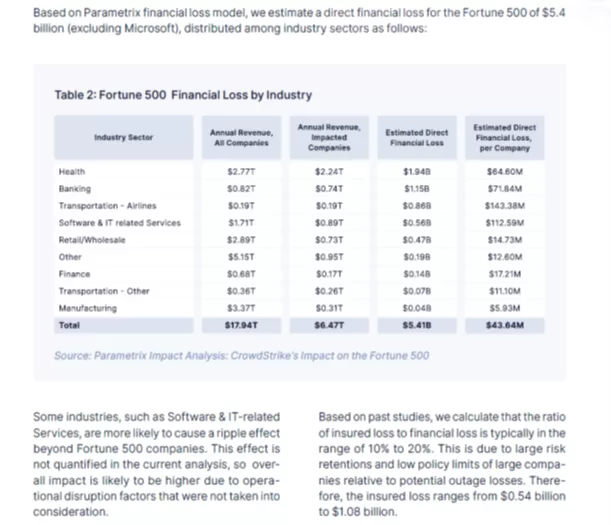The company now offers “tailored parametric insurance solutions” to protect companies when their IT systems go down, creating business or digital system interruptions. The business interruption insurance follows the July CrowdStrike outages, which created billions in estimated losses from downtime and other consequences of the software snafu.
“Enterprise solutions are customized to address the unique needs of each individual client. For example, a policy can serve as an alternative to performance or SLA (service level agreement) guarantees, offering financial advantages such as collateral relief and reduced funding costs,” Parametrix stated in a LinkedIn post.

The business interruption insurance, backed by capacity from Lloyd’s, offers limits from $10-50 million. The insurance is “parametric in nature, meaning the policyholder is automatically indemnified once a trigger event occurs. The predetermined coverage drives simplicity with the product, as it is explicitly transparent when a policyholder will receive a pay-out and for how much. This allows the policyholder to manage their risk with certainty. Parametrix monitors for any trigger events, meaning we are aware in real time if a policy needs to pay-out,” the company explains here.
“Competitive Advantage”
“A private cloud infrastructure provider could use the coverage to back its performance promises, enabling them to release collateral funds and reduce loan and funding costs by up to 60%. A SaaS company could offer their clients SLAs that are backed by the parametric policy, which not only guarantee service reliability, but also strengthen the company’s competitive advantage in the market,” according to Parametrix.
Earlier this year, Hannover Re, working with Parametrix, offered the first-ever cat bond (Cumulus Re catastrophe bond) focused on prolonged cloud service outages.
Parametrix need not go far to demonstrate the loss potential of business interruptions. Its report on losses from the CrowdStrike outages estimates 25% of Fortune 500 companies were impacted, with direct financial losses of at least $5.4 billion, leading to insured losses somewhere between $540 million and $1.08 billion. See an excerpt from the report below, showing losses by industry sector.

Other News: The Squeeze Between Ransomware and Business Interruption Insurance(Opens in a new browser tab).